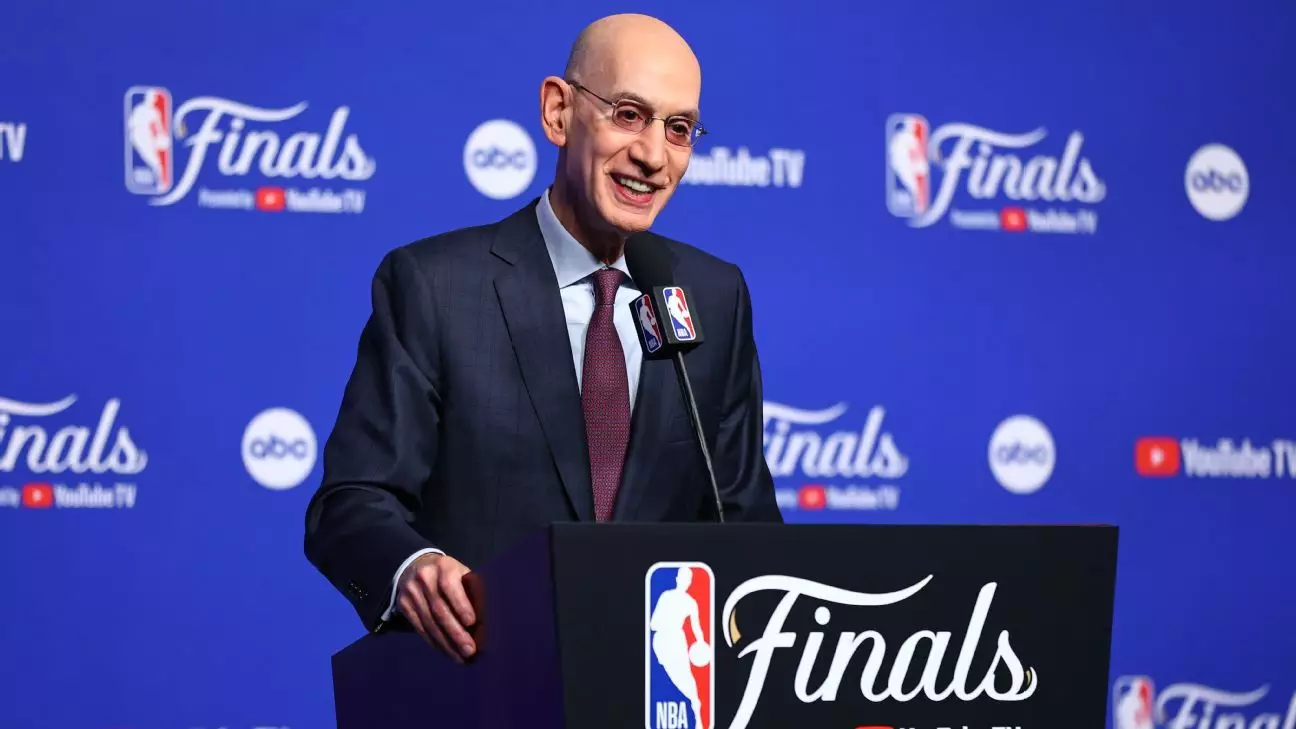In an exciting revelation during the prelude to the NBA Finals, Commissioner Adam Silver hinted at a potential shift in the league’s landscape with the prospect of expansion. This announcement marks a significant moment for basketball enthusiasts and cites a burgeoning interest among team owners regarding the addition of new franchises. The concept of expanding the NBA, which has been knocking at the door for years, is now coming into focus, heralding what could be a transformative chapter for the league.
Expansion Talks: A Bright Horizon
During his annual press conference, Silver explicitly stated that expansion will be on the agenda at next month’s board of governors meeting in Las Vegas. This is particularly intriguing as fans and various markets have long been clamoring for additional teams, notably in cities like Seattle and Las Vegas. With Silver expressing optimism over the possibility of progressive dialogue, it indicates a willingness to reconcile the interests of different stakeholders while being attentive to the sentiment surrounding the league’s growth.
His recognition of “underserved markets” highlights a crucial factor in this discussion. The NBA is not merely about the existing franchises; it represents a broader cultural footprint that transcends geographic confines. Expanding to areas with significant basketball interest could serve to energize those markets while also providing the NBA with a chance to tap into new fan bases and revenue opportunities. The initiative underscores a perfect blend of business acumen and cultural outreach, enhancing the league’s mission of inclusivity.
Parody vs. Market Growth: A Balancing Act
Adam Silver’s admission of the complexity behind expansion reflects a keen awareness of the potential implications for the existing franchises. He insightfully noted that expansion equates to selling equity in the league. This introduces a fascinating dichotomy: do current owners want to dilute their share in a league they believe in? The possibility of adding partners means contemplating the long-term health of the league and examining whether the growth can present itself as a mutually beneficial arrangement.
This dialogue feeds into the overarching narrative of maintaining competitive balance, which has become increasingly crucial within professional sports. The success of teams like the Oklahoma City Thunder and Indiana Pacers serves as acknowledgment of the structures in place that aim to assure parity. The excitement generated by a diverse championship landscape speaks volumes about the current state of NBA competitiveness and could provoke discussions revolving around how new teams might fit into this already vibrant tapestry of basketball prowess.
All-Star Game Reimagined: A Global Showcase
Silver also touched on the potential reformation of the NBA All-Star Game, hinting at a USA versus World format that echoes the ethos of global collaboration. The comprehensiveness of this idea captures the essence of the league’s commitment to diversity and global representation. As 30% of the NBA roster comprises international players, the changing demographics open up new dimensions for fan engagement. By aligning the game with Olympic spirit and media synergy, this revamped All-Star Game could evolve into an electrifying showcase of talent, fostering camaraderie among players and fans alike.
This progression is, however, not one-sided. Silver’s caution against a straightforward approach to national representation shows a level of sophistication in strategic thinking. Navigating both cultural and economic aspects of team formation highlights the need for a careful, inclusive expansion strategy.
The Challenge of Tradition: 82 Games and the Business Mindset
Moreover, Silver’s firm response to inquiries about reducing the NBA’s 82-game season reveals a strong inclination towards preserving tradition while adapting to modern demands. His assertion that no data supports injury reduction due to fewer games sheds light on the complexity of balancing player welfare and business sustainability. With the league operating as a financial entity, maintaining the existing structure also helps to stabilize league revenues, which are intricately tied to game attendance and viewership.
In essence, it reflects an enduring commitment to tradition while navigating a market that continuously evolves. The NBA must weigh the nostalgic allure of a full season against the increasing call for enhanced player health measures, all while considering the interests of teams and fans.
The forthcoming discussions on expansion promise to galvanize not just the teams involved but also the entire fanbase, potentially rewriting the playbook on how the NBA connects with its audience and stakeholders alike. With Adam Silver at the helm, there is hope that this growth will reflect the true spirit of the game while ensuring the financial viability that keeps the league thriving.


Leave a Reply